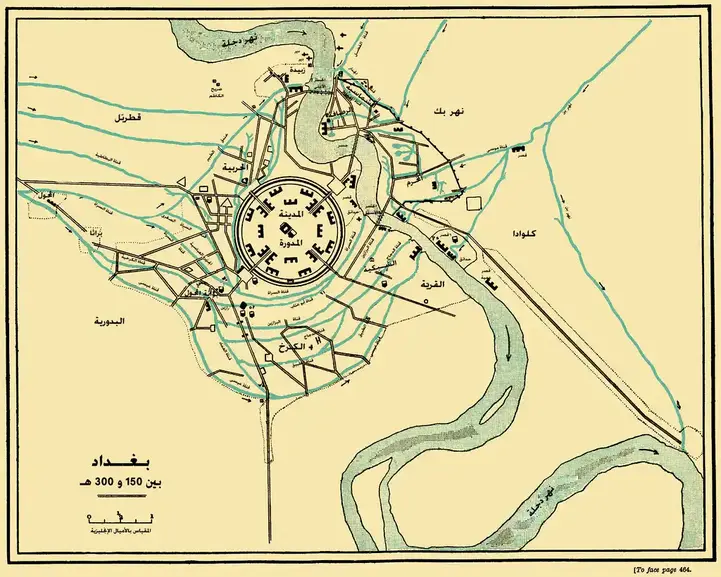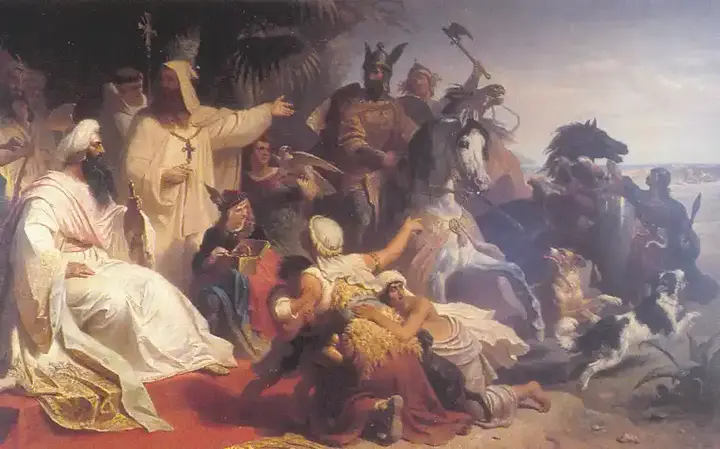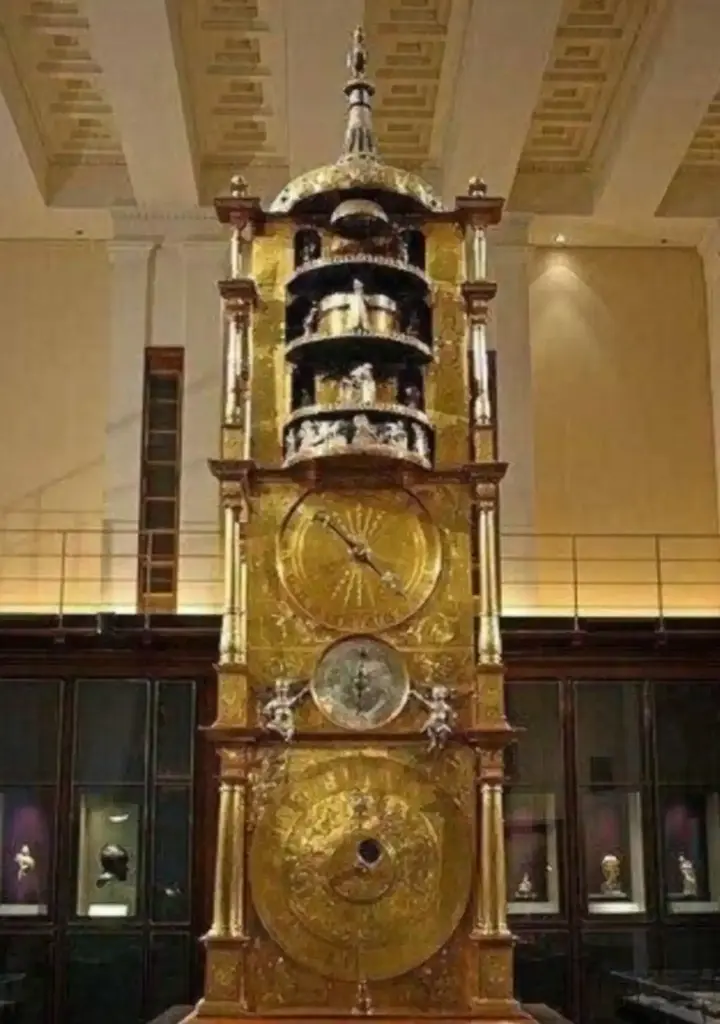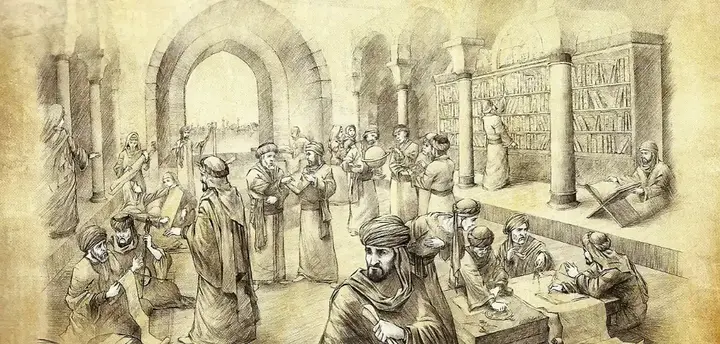Baghdad in the Middle Ages. Beacon of the World
I do not find words that fulfill that city historically right, the city of Baghdad with eight million people, which is considered the largest city in the Middle East after Cairo, has a glory and history that other cities do not, we will return to the Middle Ages where the world was mired in the darkness of ignorance and fanaticism to see Baghdad as a beacon of the world and civilization at that time and draw from its history what arouses nostalgia for that past that was and still rises with its light above the prejudices of fanaticism and calls of ignorance, let us The lack of the story of Baghdad... A thousand years ago.
Show key points
- Baghdad, with its rich history and population of eight million, stands as one of the most significant cities in the Middle East after Cairo.
- Founded by Abbasid Caliph Abu Jaafar Al-Mansur between 762 and 764 AD, Baghdad became the world's largest city at the time and a center for science and arts.
- During the rule of Caliph Harun al-Rashid, Baghdad reached its peak in power and culture, earning it the title of capital of the ancient world.
- ADVERTISEMENT
- Harun al-Rashid established the House of Wisdom, promoted translation of scientific works, and encouraged scholars, leading to significant advances in fields like astronomy and medicine.
- Innovations such as the engineering marvel of the water clock and the introduction of Arabic numerals, including the number zero, highlighted Baghdad’s scientific superiority.
- The city became a melting pot of cultures and knowledge, especially under Caliph Al-Ma'mun, who transformed the House of Wisdom into a global academic hub.
- Baghdad’s golden age left a lasting legacy in science, literature, and technology, influencing global civilizations despite the adversities it later faced.
Baghdad is the greatest city and the city of medieval dreams

Recommend
I do not find words that fulfill that city historically right, the city of Baghdad with eight million people, which is considered the largest city in the Middle East after Cairo, has a glory and history that other cities do not, we will return to the Middle Ages where the world was mired in the darkness of ignorance and fanaticism to see Baghdad as a beacon of the world and civilization at that time and draw from its history what arouses nostalgia for that past that was and still rises with its light above the prejudices of fanaticism and calls of ignorance, let us The lack of the story of Baghdad... A thousand years ago.
Going back a thousand years to the past

In the eighth century AD, specifically between 762 AD and 764 AD, it was the beginning of "Baghdad" that we know at the hands of the Abbasid Caliph "Abu Jaafar Al-Mansur", who built it and made it the largest inhabited city in the world in his time with more than one million people, and also made it a beacon for science and scientists in various colors of science and arts, making it have four gates, namely the door of "Khorasan", "Bab al-Sham", "Bab al-Kufa" and "Bab al-Basra", and surrounded it with a wonderful and distinctive circular wall whose remains are still standing. Until now, Baghdad reached the height of its power and beauty in the era of Caliph Harun al-Rashid, the fifth caliph of Bani al-Abbas, and rightly deserved the title of capital of the ancient world. Baghdad was best known for a number of other names such as "Rounded City", "Al-Zawra" and "Dar es Salaam".
The best eras of Baghdad

When the Caliph Harun al-Rashid took over the caliphate in 786 AD, he issued a comprehensive pardon for all fugitives and underestimators except for some heretics, and he built the "House of Wisdom", in which he collected large numbers of books and references in various colors of different sciences, and he also ordered the translation of the greatest scientific book of his time into Arabic, a book "Origins or Pillars in Engineering" by Euclid, and he also encouraged scientists and innovators and rewarded them in giving, so science developed, especially physics, astronomy, medicine and technology, so the water clock that He sent it as a gift to "Charlemagne" King of Europe in his time, which from its development "Charlemagne" and his entourage thought that it was possessed by the jinn and said, "Our magic is Haroun", so they could not explain how it works as it falls from a number of metal balls every hour, and the number of metal balls falling indicates the clock accurately, as it was 4 meters high, and this indicates the great technical difference between Arabs and Europeans in the era of Harun al-Rashid.
Industry and Art in Baghdad

Harun al-Rashid was interested in scientists and poets from three continents, where his era crowned some works of art and scientific and literary translations that exceeded the horizons, perhaps the most famous of which are "One Thousand and One Nights" and "Kalila and Dimna", not to mention the translation of many books of medicine and astronomy from Latin, Persian and Hindi into Arabic, in addition to that, he transferred the technology of papermaking from China to Baghdad and established the first paper factory, which was much easier and cheaper than slavery made of animal skins, Many sciences and cultures merged under the roofs of Baghdad to become the most developed and civilized city in the world, and the result of that development was the creation of Arabic numerals, which are wrongly called today (Latin numerals), and of course the most influential discovery in the world of mathematics was the number "zero", which had a great impact on the development of mathematics around the world.
House of Wisdom is the center of science in the heart of Baghdad

The Abbasid Caliph Abu Jaafar Al-Mansur was a lover of books of medicine, stars, engineering and literature and collected many of those books in the palace of the caliphate, and when Harun al-Rashid took over the caliphate, he made those books in a public library in the heart of Baghdad and added to them many books that were translated in his time to become available to all people to benefit from the sciences in it, and he called that library the name "House of Wisdom", and added to it all the books that he found in the conquests such as the conquest of "Amoria" and " Ankara" where he ordered to preserve all books and transfer them carefully and carefully, and lived the House of Wisdom finest eras in the time of the Caliph "Al-Ma'mun" where he paid great attention to the translation of Greek and Latin books and became the House of Wisdom a global center for studies and translations and produced many scientists in various fields, and tells about Al-Mamoun that he was asking his enemies from the defeated Romans to give him the Greek manuscripts that they have in exchange for signing peace treaties or in exchange for the release of some prisoners, as he narrated about him He used to encourage translators and give them the weight of what they translated into Arabic dinars, which made the era of Al-Ma'mun one of the most prosperous eras of Baghdad in translation and transmission, and the emergence of translators' flags such as "Hunayn bin Ishaq" made the translation process itself evolve a lot from literal translation word by word to translation with meaning, so translations became richer and more eloquent in meaning than before, and perhaps one of the most evidence of Baghdad's interest in translation in that era is that it has been known about "Hunayn bin Ishaq" alone more of 100 pupils of translators.

Perhaps what we mentioned about Baghdad in the Middle Ages gives the reader a simple perception of the development of that great city, and to know the extent to which the civilization of Baghdad contributed to the progress in science and arts, which was and still has the credit for discovering it despite the tragedies and suffering it went through over time.








